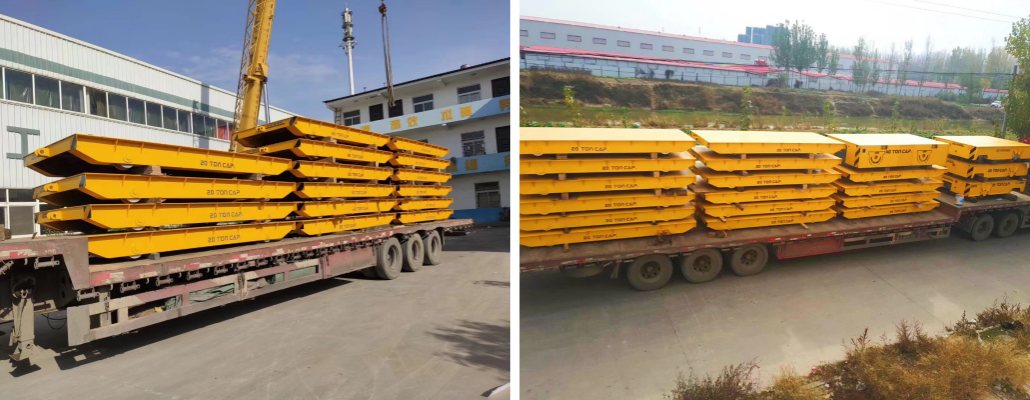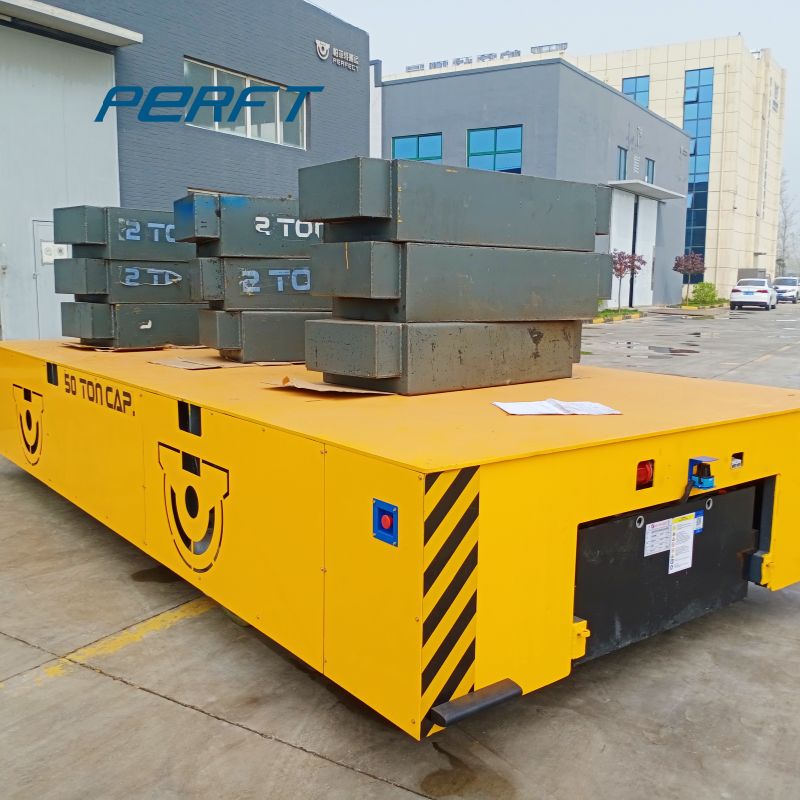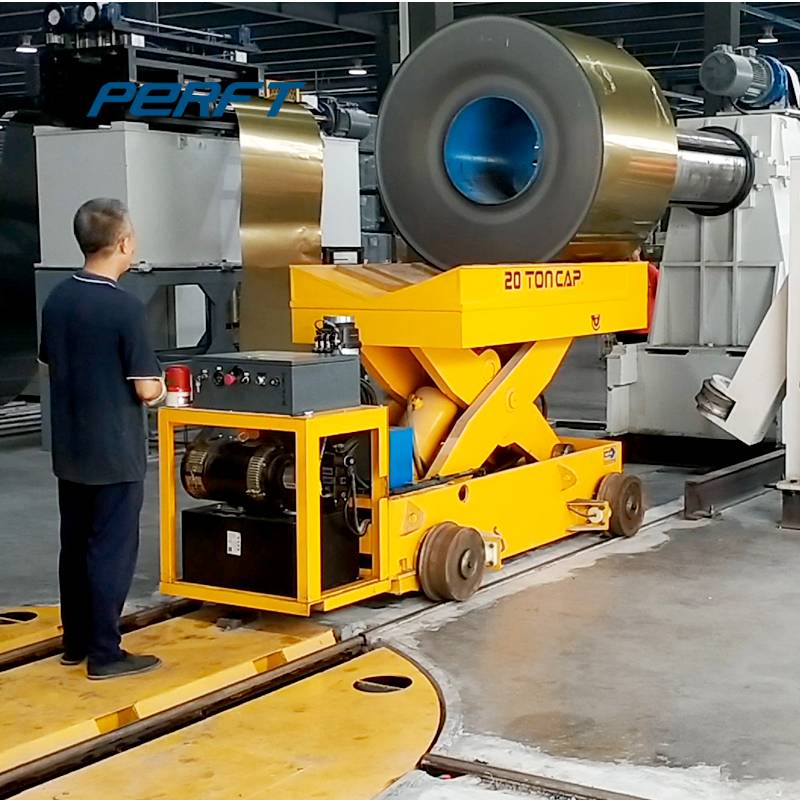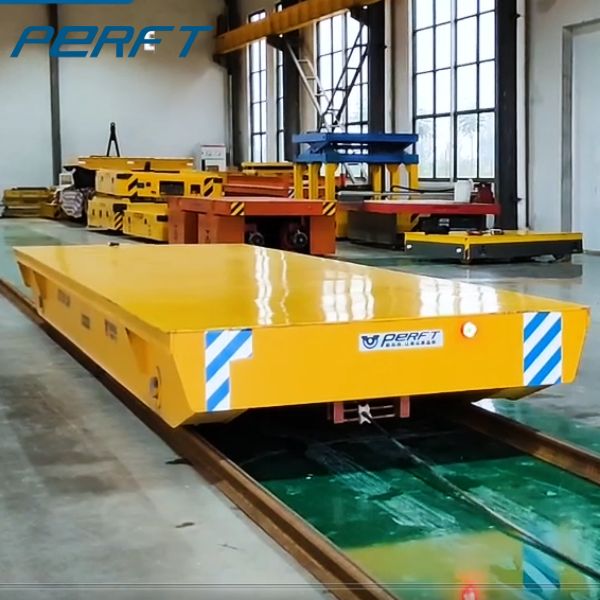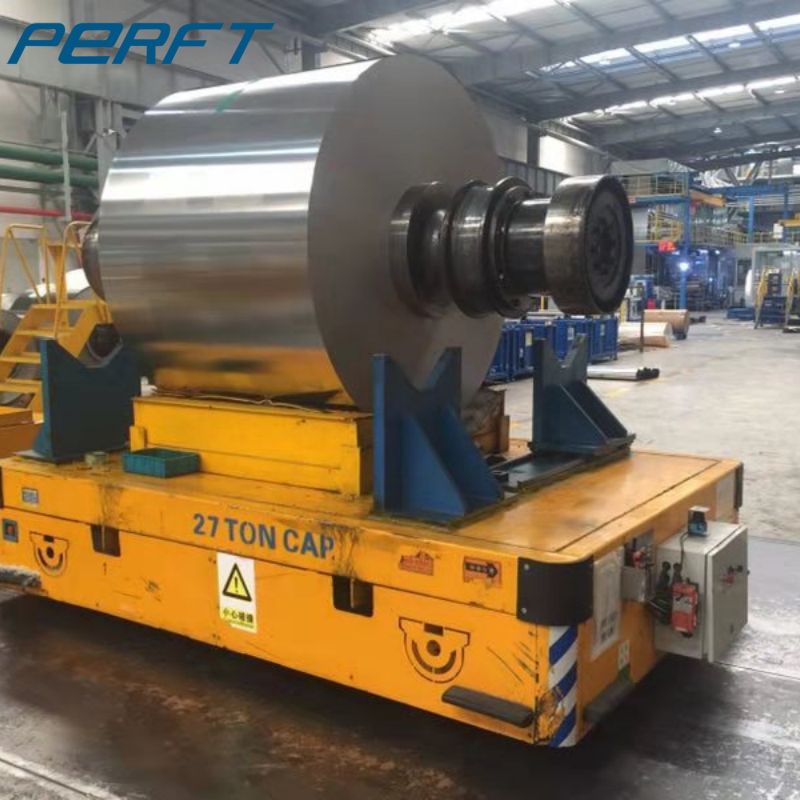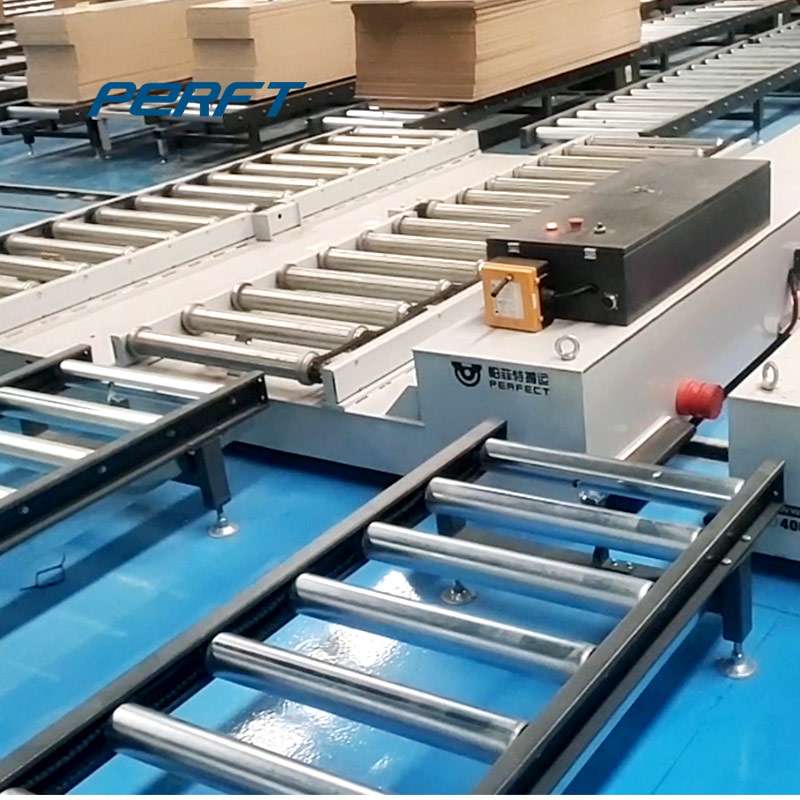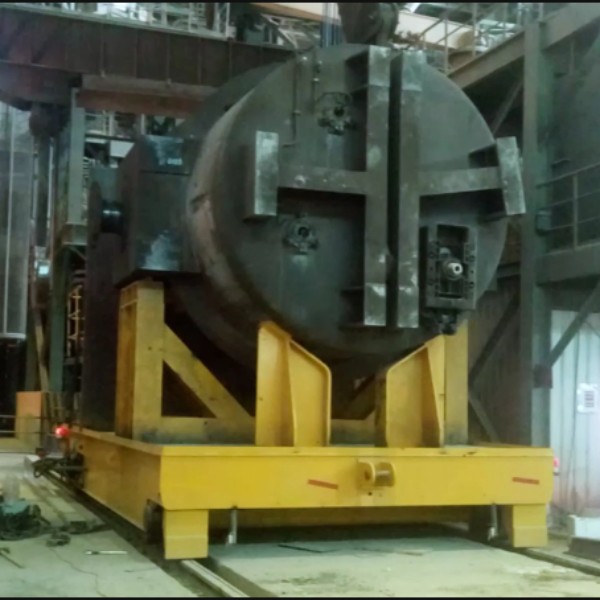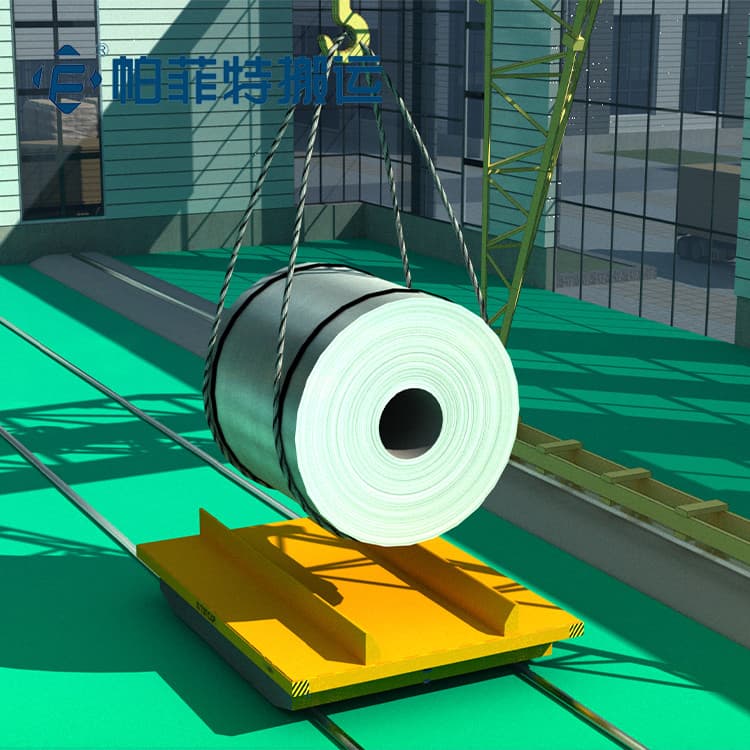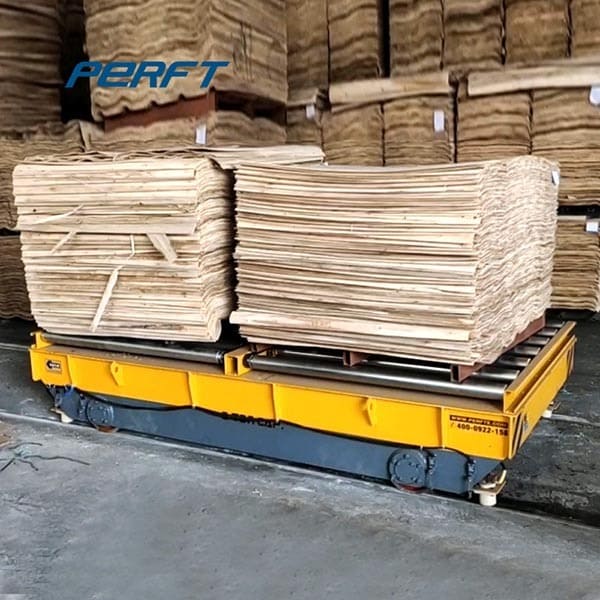Rail Transfer Trolley: Common Operational Problems
Mechanical
Wheel Wear of Rail Transfer Trolley
Long-time running and carrying heavy loads will lead to wheel wear. Frequent friction between the wheels and the track will accelerate the wear of the wheels if the track surface is not smooth enough or there are impurities. For example, when there are sand, iron chips, and other foreign objects on the track, the wheels will be subjected to additional wear during the rolling process, which will make the rim of the wheels thinner and pits appear on the tread surface. Wheel wear, to a certain extent, will affect the operational stability of transfer trolley on rail. In severe cases, this can lead to problems with the fit between the wheel and the rail, increasing the risk of derailment. Moreover, the worn wheels will also affect the traveling accuracy of transfer trolley on rail, which will have a negative impact on some work scenes that require stopping.
Frame Deformation of Motorized Transfer Trolley
When transfer trolley on rail is overloaded or subjected to uneven impact force, the frame may be deformed. For example, when loading or unloading cargo, if the weight of the cargo is concentrated on one side of the frame, or if transfer trolley on rail collides with an obstacle during operation, the structure of the frame may be damaged. Deformation of the frame can lead to problems with the fit between the various components of the flatcar. For example, the verticality and horizontality of the wheels may change, thus affecting the driving performance of motorized transfer trolley, resulting in deflection and swaying. At the same time, a deformed frame can increase the stress on other components, triggering a chain reaction that can lead to more damage.
20T Rail Transfer Trolley Video
Track Related Problems
Track Deformation and Damage of Rail Transport Platform
Tracks may be deformed due to foundation settlement, crushing by heavy loads, or environmental factors (e.g., thermal expansion and contraction due to temperature changes). After deformation of the track, transfer trolley on rail will cause bumps during operation, which will affect the smoothness of transport. For example, in some outdoor rail transfer trolley transport routes, after years of use and seasonal changes, some of the tracks may be bent or uneven. The track may also be damaged due to corrosion, wear, and tear. Especially in some corrosive gas or liquid working environment, the track material may be corroded, reducing the strength and service life of the track. When the damage to the track reaches a certain level, it will pose a serious threat to the safe operation of transfer trolley on rail, such as leading to the derailment of transfer trolley.
Foreign Objects on Rail
Various foreign objects may appear on the track, such as falling tools, debris, or waste materials from the production process. These foreign objects can hinder the normal operation of transfer trolley on rail and may even lead to wheel damage or derailment of transfer trolley. For example, in industrial production plants, small parts or metal fragments may fall onto the track, and transfer trolley on rail wheels may bounce or jam when they run over these foreign objects.
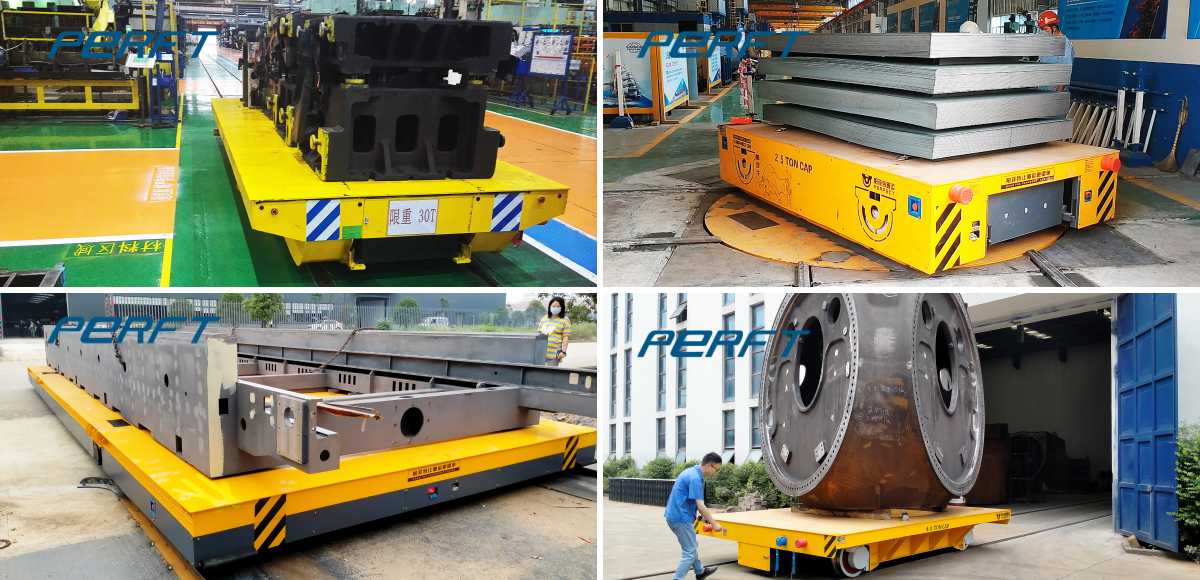
Electrical System Failure
Power Supply Problems of Electric Transfer Trolley
Transfer trolley on rail, if electrically powered, may have faults in the power supply. For example, deterioration, short circuit, or poor contact of the power supply line can lead to a sudden power failure of transfer trolley on rail during operation. This not only stops the leveller from running and affects its efficiency, but may also cause electric transfer trolley to stop at an inappropriate position on the track, resulting in traffic jams or other safety hazards. Battery powered transfer trolley on rail may encounter problems such as low battery power and aging batteries. If the batteries are not recharged or replaced in a timely manner, the range of transfer trolley will be reduced, and it may even fail to work properly during operation.
Control System Failure of Transfer Trolley
The control system of transfer trolley on rail is responsible for the functions of motorized transfer trolley, such as starting, stopping, and speed regulation. The control system may fail due to damaged electronic components, programming errors, or electromagnetic interference. For example, when the frequency converter that controls the speed of transfer trolley on rail fails, transfer trolley may lose control of its speed or may not be able to regulate its speed properly, which is very dangerous to the safe operation of rail transfer trolley.
